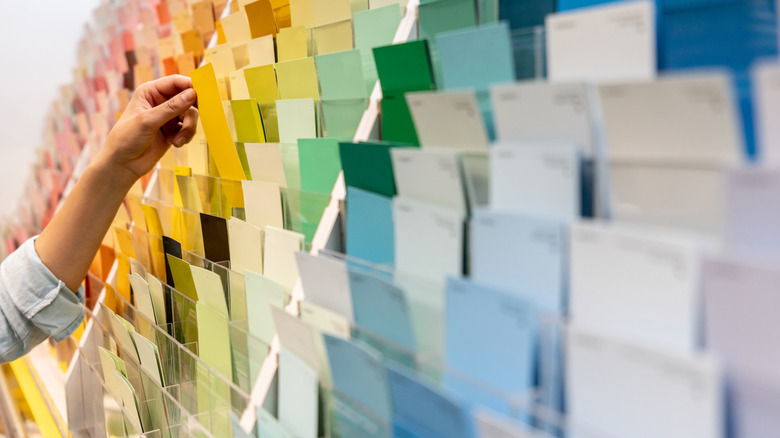Colors You Should Never Paint Your Interior Doors
Painting your front door can be a fun way to upgrade your home's exterior with fun or exciting pops of color — but finding the right shades for your interior doors is another story. The color of your interior doors will have to coordinate with more than just your front porch, and finding a paint choice that keeps things balanced and stylish can be a difficult task. It's crucial to consider the surrounds when making your decision, so you should pick your paint color last when designing a room. While you may be tempted to make a bold statement with your paint choice, you should never use vibrant colors that clash with your home's color palette.
Even in more eclectic decor styles, maintaining a level of cohesion is key to a successful design. This doesn't mean you have to exclusively stick to neutrals, but you should be cautious about certain vibrant tones. Colors with high intensity can dominate a room, particularly when applied to something as large as a door. If the color clashes with your decor, it can make your space look chaotic and overwhelming. Opting for shades that complement rather than compete with your interior can enhance the overall appeal of your home design.
Avoid vibrant colors that clash
Some of the best colors to paint your interior doors are neutral shades that complement a wide range of designs and color palettes. On the other hand, vibrant tones can challenge the balance of a cohesive look. If you think that all your interior doors should be the same color, intense shades will create more opportunities to clash with your decor and dominate your design. For any interior door, the paint you choose should support the room's color scheme and ambiance. Bright hues like red, orange, and yellow may seem like fun pops of color, but they tend to evoke feelings of anxiety and overstimulation — which could ruin the atmosphere in rooms meant for relaxation. If these vibrant colors already cause stress, putting them in a room where they don't match will only amplify the chaos.
This doesn't mean your interior door paint can't make a statement. Color drenching is a great way to add interest while still remaining cohesive. If you already have a paint color you love on your walls, painting your door with the same shade will extend the hue for a unique look that adds coziness and even makes the room appear larger. Depending on your home's color palette, some vibrant shades may work well on interior doors to complement neutral decor — but most often, they can clash easily and disrupt your home's aesthetic. Aim for a paint that's already established in your current palette, not a random swatch that carries the chance of looking isolated or disjointed.

